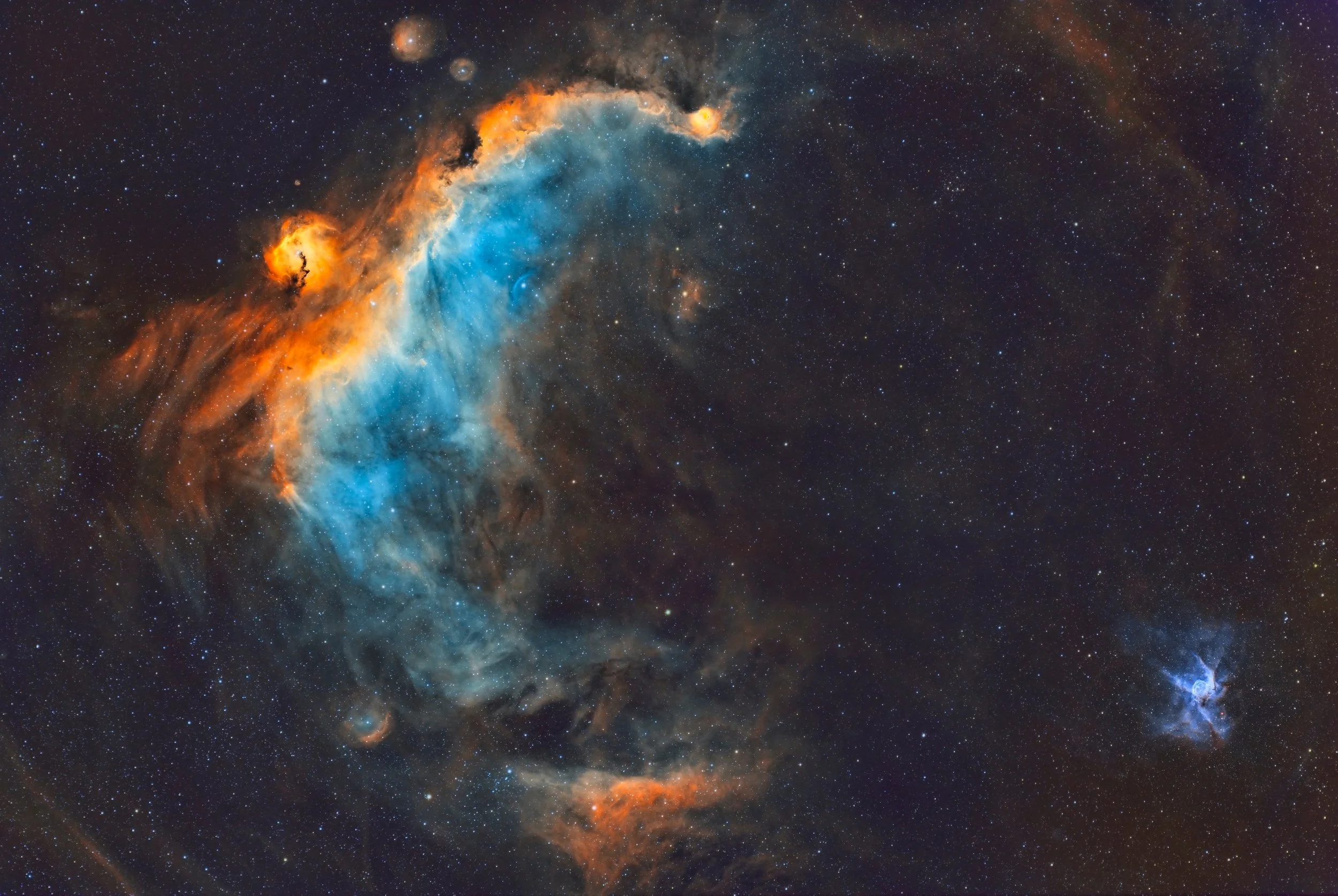
AAPOD2 Image Archives
Thor's Helmet - NGC 2359
Image Description and Details :
Thor's Helmet - NGC 2359 Thor's Helmet, an emission nebula ~11,960 light years away, is in the constellation Canis Major. The central star is the Wolf-Rayet star WR7, a star thought to be in a brief pre-supernova stage of evolution. Acquisition: Location: Queen Creek, AZ Bortle 7 Date: 2022-02-26 - 2022-03-11 Lights (Dithered, Cooled 0°C, Gain 100): 199 x 180s Darks: 25 Flats: 25 Dark Flats: 25Hardware: Camera: ZWO ASI 2600MC PRO Scope: Celestron EdgeHD 11" Focal Reducer: Celestron 0.7x Focuser: Prodigy Microfocuser Guide Camera: Unguided Guide Scope: Unguided Mount: GM2000 HPS II Filter: Optolong L-EnhanceSoftware: SGP Pixinsight PhotoshopProcessing: Stacked in Pixinsight (WBPP, SubframeSelector, DrizzleIntegration) Pixinsight (DCrop, ABE, PhotometricCC, EZDenoise, EZSoftStretch, EZStarReduction, StarNet2)) Gradient removal using GradientXterminator Camera Raw Filter in Photoshop AstroFlat Pro Color/Levels Adjustments
Copyright: James Hawks
The Giant Vs. The Mighty
Image Description and Details :
This shows the huge Seagull Nebula, and the very small (in comparison) but bright Thor’s Helmet Nebula, in narrowband.
This is an image 2 years in the making. I spent 10 full nights on imaging the Seagull Nebula wide field, as I also wanted to include Thor’s Helmet in the frame. I then added an extra 2 nights worth of data using a larger telescope on Thor’s Helmet only. This allowed me to get a nicer view on that target. All the data acquired was by myself with my own gear.
The Seagull Nebula is known as IC 2177. It is a large nebula that can be found 3,650 light-years away in Monoceros. It is a great target for both broadband and narrowband imaging, and is very close to the much smaller Thor's Helmet Nebula.
If you look closely near the Oxygen gases of the Seagull Nebula, you should be able to spot a bright star with a strange arc-shaped line of gas just above it. This is commonly known as the "Bow shockwave" in IC 2177. It is believed to come from the interaction between the interstellar dust within the nebula, high radiation winds, and gas expelling from the double star system "FN CMa”. The exact origin is still not very clear, but we might learn more about it in the years to come!
Thor’s Helmet is known as NGC 2359. It is a cloud of interstellar gas, although very faint, the colors in the gases really pop when taking long exposure shots with any camera.
This beautiful deep-sky object gets its glow from WR7, a massive Wolf-Rayet star that will soon turn into a supernova.
This is a total of 61 hours of exposure, a record for me as my longest acquisition so far was 48 hours. I captured 99% of the data from the city, Bortle 9. I captured a little bit of the data (half a night) from a Bortle 4 spot in the desert for the OIII in Thor’s Helmet.
Acquisition Info:
Target: The Seagull Nebula and Thor Nebula
Imaged from: Las Vegas Bortle 9 + Nevada Desert Bortle 4 | January/February 2022
Camera: QHY600M
Filters: S+H+O for Seagull wide field, H+O for Thor’s Helmet
Telescope: Meade 70mm APO for Seagull wide field, SVX130 for Thor’s Helmet close up
Time per frame: 600sec
Time total: 61 hours total. 50 hours for the overall image wide field + an additional 11 hours for Thor’s Helmet close up.
Copyright: Antoine & Dalia Grelin


